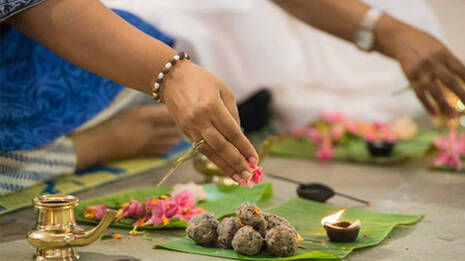Hiranya Shradham
Price : Rs 500
Among the Hindus, the sraddha is a religious ceremony, often performed annually, in propitiation of their departed ancestors who are technically known as Petrus, the word sraddha, according to sage pasta, is derived as follows: Sri vidya pitam that which is performed with great faith. The faith referred to here is the faith in the Vedas, whose dictates are taken as incontrovertible and which enjoin its performance as a duty. It is interesting to note that sraddha or faith, and Medha or intelligence, are actually deified in the Vedas. Among the important items of a sraddha are the argyria (water libation): Havana (fire-offering), the feeding of Brahmins, pinda dana, vikira, Dakshina-offering, and tarpana. Holy Brahmins are fed in a worshipful manner, after invoking of them the souls of the departed ancestors of three generations identified with Vasu, Rudra, and Aditya, on the paternal or maternal side, as the case may be. The pitrus, who live in pitru Loka in the form of spirits, are fetched into the sraddha venue by the vishvedevas or the universal soul. The Vidarbha or kusa grass and til sesamum are two significant materials used in the performance of sraddha.

The Padma Purana states that the kusa grass and black til sprang from the body of Vishnu. Aswalayana gruhya sutra points out that the essence of waters became Vidarbha, alluding to a Vedic story. Since Vishnu is anathema to evil spirits, the use of til prevents sraddha offerings from being pilfered by them. The use of kusa, being the essence of all holy waters, makes the whole rite holy. Silver vessels for argyria and pinda in sraddha are highly recommended because, the ancient pitrus milked svadha in a silver vessel and they are highly pleased with the sight, use, and gift of such vessels. The sraddha became an important limb of Hindu religious life.


